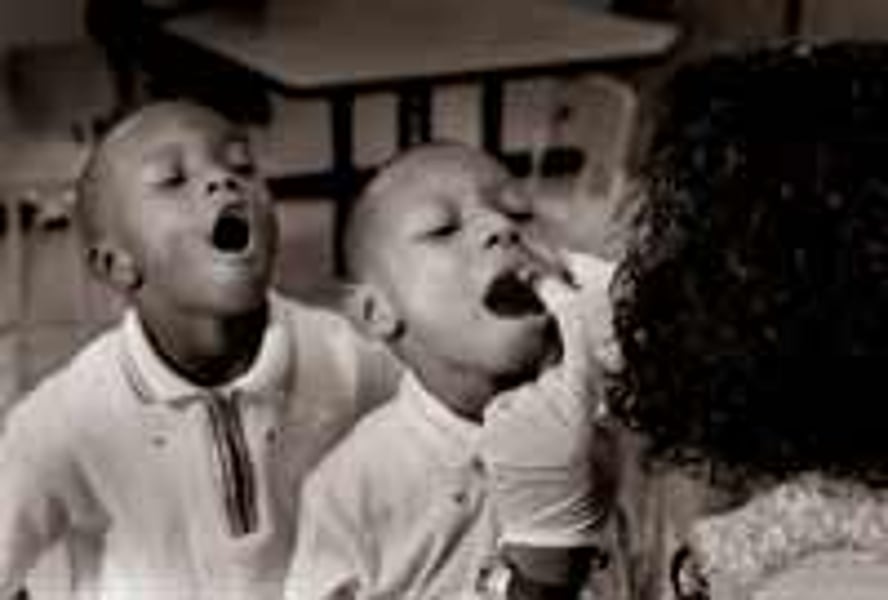Tooth Accidents

What should I do if my child bumps or chips a tooth?
If the tooth was merely jarred or loosened slightly, you probably won't need to do anything, though it's a good idea to call your child's dentist to get her opinion. If you see some bleeding from the gums, pat the area with a cold damp washcloth or gauze. The injury will heal in a few days.
If the tooth was pushed in or out of its usual position, call your child's dentist, who can examine the tooth to look for damage to the root. In some cases, the tooth will move back into position on its own. In other cases, the dentist may gently push it back. If blood flow to the root is damaged, your child's dentist can usually save the tooth by performing root canal therapy. But if the root is broken, the tooth will probably have to be pulled. Your child's dentist can talk to you about how to replace it.
Your child's dentist should also check a chipped tooth in case there are cracks or other damage you can't see. A chipped tooth can be repaired using bonding material.
If a baby tooth gets knocked out, don't worry. A permanent tooth will grow in its place. See the dentist, however, just in case underlying teeth were damaged and to make sure the permanent tooth will have enough space to grow in properly.
If a permanent tooth is knocked out, can it be saved?
Yes, but you'll need to act quickly. A permanent tooth must be replaced in its socket as soon as possible -- ideally within 15 minutes. After two hours, it may be too late.
Here's what to do at the scene of the accident: First, rinse off the tooth with saliva or milk. (Do not rinse with water -- the chlorine in water can damage the root.) Hold the tooth by the crown (top), not by the root, and -- if your child is old enough and calm enough not to swallow it -- replace it in the socket. Be sure to position the tooth facing in the right direction. Gently press down with your thumb until the tooth is level with adjacent teeth. Instruct your child to bite down softly on a wad of clean cloth to keep the tooth in place. Call your child's dentist for an emergency appointment.
If you can't reposition the tooth in your child's mouth, have your child tuck the tooth in his mouth between his cheek and gum to protect it. Keeping the tooth moist that way is essential to keeping it alive. If your child is too young or too upset to hold the tooth there, place it in a damp tissue or a small cup of milk, which can preserve the tooth while you arrange an emergency dental appointment.
What if my child injures his gums or bites his lip or tongue?
If the area is bleeding, put cold water on a piece of gauze and apply it gently to the site for a few minutes (or until the bleeding stops). A frozen juice or dessert bar can limit the swelling and has the added benefit of taking your child's mind off the pain. Over the next week, watch for signs of infection, such as fever or swelling and tenderness. Call your child's doctor immediately if you think the wound is infected.
References
American Academy of Pediatric Dentistry. Pediatric Oral Health Information for Parents. http://www.aapd.org/pediatricinformation/faq.asp.
American Academy of Pediatrics. A Guide to Children's Dental Health.
American Association of Orthodontists. Orthodontic Emergencies and Other Problems.
Related Posts
Una autopsia confirma la causa de una misteriosa enfermedad paralizante en los niños
JUEVES, 26 de mayo de 2022 (HealthDay News) -- Los investigadores quizá por fin...
COVID-19 Risk for Dialysis Patients Tied to Antibody Response to Vaccine
TUESDAY, Aug. 16, 2022 (HealthDay News) -- During the omicron-predominant...
El trasplante de riñón es seguro cuando el donante del órgano tiene COVID, según un estudio
VIERNES, 13 de mayo de 2022 (HealthDay News) -- Incluso antes de la pandemia, la...
Simplified Approaches to Hypertension Screening Seem Reliable
WEDNESDAY, April 6, 2022 (HealthDay News) -- Simplified blood pressure (BP)...
